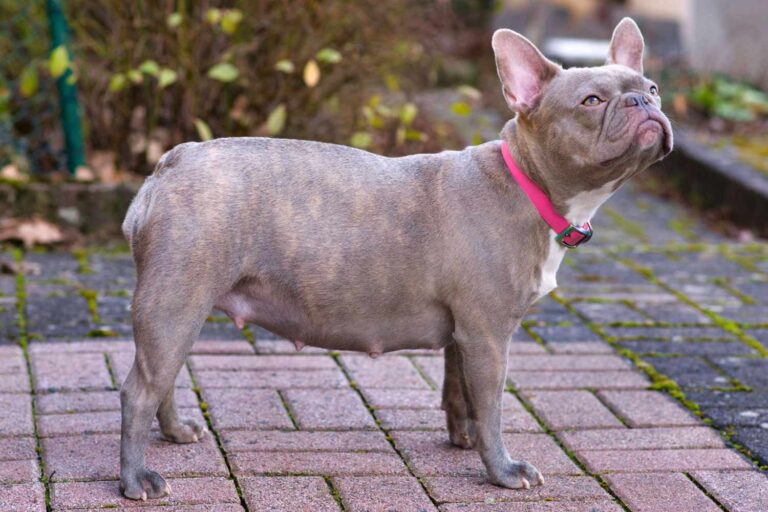Wondering when does a dog show signs of pregnancy? If you are a dog owner or breeder, this comprehensive guide is tailored just for you. Understanding the signs of pregnancy in dogs is crucial for providing proper care and preparing for the arrival of adorable puppies. From behavioral changes to physical symptoms, a dog’s body undergoes various transformations during pregnancy. By knowing what to look for and when these signs typically appear, you can ensure the health and well-being of both the mother and her future litter. Let’s delve into the fascinating journey of canine pregnancy and discover the telltale indicators that your furry friend is expecting.
Understanding Canine Pregnancy
When a dog shows signs of pregnancy can vary, as it typically takes around 6-9 weeks for a dog’s pregnancy to be noticeable. Once a dog is pregnant, there are several key stages and signs to look out for. It is important to note that a veterinarian should confirm the pregnancy to ensure proper care.
Early Signs
During the early stages, a dog’s nipples may become more prominent and pink. Some dogs also show signs of morning sickness similar to humans. It is crucial to monitor changes in appetite and behavior during this time.
Mid-term Signs
As the pregnancy progresses, the dog’s abdomen will start to enlarge, indicating the growing litter. A veterinarian can perform an ultrasound to confirm the number of puppies. Regular veterinary check-ups are essential during this period.
Late-term Signs
In the final weeks, the dog may start nesting and become more restless. A clear sign of impending labor is a drop in body temperature. It is crucial to have a whelping area ready and prepared.

Early Signs of Pregnancy in Dogs
Recognizing the early signs of pregnancy in dogs is essential for their care and well-being. Typically, pregnancy in dogs lasts around 63 days from the day of ovulation. Here are some signs to look out for:
Changes in Behavior
Dogs may exhibit changes in behavior such as increased affection, nesting behavior, or mood swings. They may also appear more tired than usual.
It is important to monitor your dog’s behavior closely for any unusual signs.
Physical Changes
Physical changes include weight gain, enlarged nipples, and a slightly swollen abdomen. Additionally, you may notice a clear or pink-tinged vaginal discharge.
- Weight gain: A gradual increase in weight over the weeks
- Enlarged nipples: Nipples may become larger and more prominent
Behavioral Changes in a Pregnant Dog
When a dog is pregnant, there are several behavioral changes that may indicate the beginning of pregnancy. One of the earliest signs is a change in appetite. Some dogs may eat more than usual, while others may experience a decrease in appetite. Additionally, pregnant dogs may display nesting behaviors, such as seeking out quiet and secluded areas to create a comfortable space for giving birth.
Changes in Activity Level
Pregnant dogs may become more lethargic as the pregnancy progresses. They may show less interest in physical activities or playtime. It is important to monitor their activity levels and provide adequate rest to ensure the health and well-being of the mother and her puppies.
Emotional Changes
Pregnancy can also impact a dog’s emotional state. Some pregnant dogs may exhibit mood swings, becoming more affectionate and seeking extra attention from their owners. On the other hand, some dogs may become more irritable or protective of their space.
Physical Changes During Canine Pregnancy
During a dog’s pregnancy, there are several physical changes that occur as the gestation period progresses. One of the earliest signs is a change in the nipples; they may become more prominent and develop a darker color. Additionally, the dog’s abdomen will start to enlarge as the puppies grow. This increase in size is noticeable, especially in smaller breeds or first-time mothers.
Behavioral Changes
Along with the physical changes, there are behavioral changes that can be observed in pregnant dogs. Some dogs may exhibit nesting behavior, where they start to create a comfortable space for their upcoming litter. Pregnant dogs may also become more affectionate or protective towards their owners.
Dietary Changes
Proper nutrition is crucial during canine pregnancy. It is essential to provide a balanced diet rich in nutrients and minerals to support the growth of the puppies. Consult your veterinarian to determine the appropriate diet for your pregnant dog to ensure the health of both the mother and the developing puppies.
Diet and Care for a Pregnant Dog
During pregnancy, a dog’s nutritional needs change significantly. A well-balanced diet is crucial for the health of both the mother and her developing puppies.
Proper Nutrition
A pregnant dog should be fed high-quality commercial dog food that is formulated for growth and reproduction.
**It’s essential to provide a ** nutrient-rich diet containing essential vitamins, minerals, and proteins.
Regular Veterinary Check-ups
Regular visits to the vet are vital to monitor the health of the pregnant dog and ensure the pregnancy is progressing smoothly.
- **This includes** **prenatal vitamins** and supplements prescribed by the vet.
- **Regular check-ups can also help** **detect any potential issues early on** and ensure a safe delivery.
Preparing for the Arrival of the Puppies
As the time approaches for your dog to give birth, it’s essential to make preparations to ensure a smooth and comfortable experience for both the mother and her puppies. Here are some crucial steps to take:
Gather Necessary Supplies
Stock up on supplies such as a whelping box, clean towels, heating pad, puppy milk replacer, and a digital thermometer.
Ensure you have these items readily available at least two weeks before the expected delivery date to avoid last-minute stress.
Set Up the Whelping Area
Create a calm and quiet space for the mother to give birth. Line the whelping box with clean bedding, and place it in a warm, draft-free area.
- Make sure the room is quiet and free from disruptions to help the mother feel safe and comfortable.
- Use a whelping box to provide a secure environment for the mother and puppies.
Frequently Asked Questions
- How soon can a dog show signs of pregnancy?
- Dogs can start showing signs of pregnancy as early as 3 weeks after conception.
- What are some common signs of pregnancy in dogs?
- Common signs of pregnancy in dogs include changes in behavior, increased appetite, weight gain, enlarged nipples, and more.
- Do all female dogs show noticeable signs of pregnancy?
- Not all female dogs show obvious signs of pregnancy, some may have mild symptoms or show no external signs at all.
- Can you perform a pregnancy test on a dog at home?
- There are at-home pregnancy tests available for dogs that can detect pregnancy hormones in their urine.
- How long is the gestation period for dogs?
- The average gestation period for dogs is around 63 days, but it can vary between 58 to 68 days.
Final Thoughts
In summary, understanding when a dog shows signs of pregnancy is crucial for pet owners to provide adequate care and preparation for the upcoming litter. The key takeaways from this comprehensive guide include the importance of observing behavioral and physical changes in your female dog, such as decreased energy levels, changes in appetite, and noticeable weight gain. Additionally, monitoring for signs like nesting behavior, nipple enlargement, and a palpable abdomen can help confirm pregnancy. Remember, consulting with a veterinarian for proper confirmation and guidance throughout the pregnancy journey is essential to ensure the health and well-being of both the mother and her puppies. By staying informed and vigilant, you can provide the best possible support for your pregnant dog.



